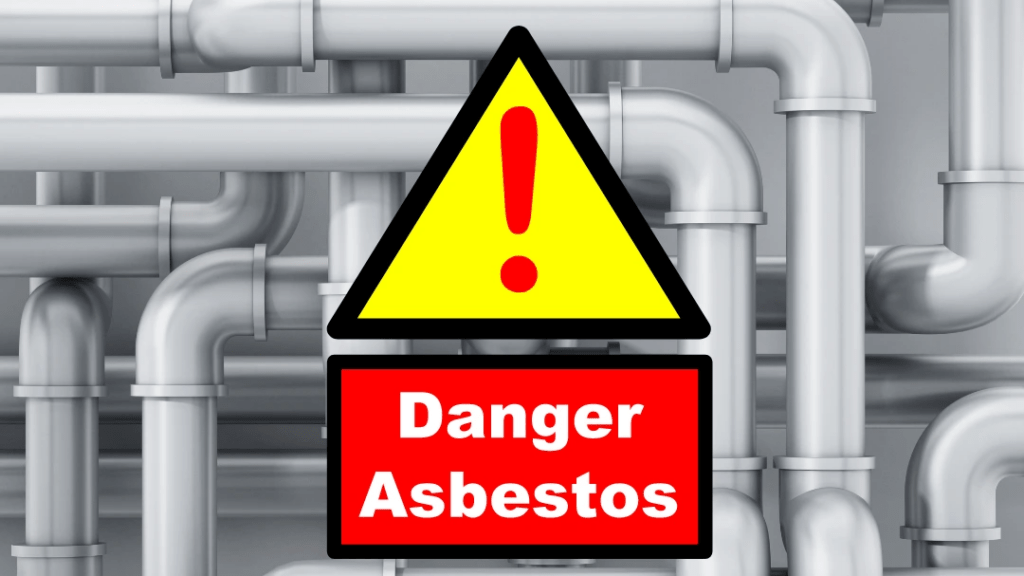Key takeaways: About 18% of the U.S. and Canada’s pipes are asbestos cement pipes. Although the risk of asbestos exposure is marginal for those with AC pipes, the risk still stands, especially as these pipes are susceptible to degradation after a few decades.
Why Was Asbestos Used in Pipes?
The asbestos cement (AC) pipe, or the transite pipe, was initially developed in Italy at the turn of the twentieth century. It was introduced in the United States in 1929 and was utilized for decades following. Asbestos is notorious for its ability to insulate well, its fireproofing qualities, and its relatively sturdy nature. Besides comprising the pipes themselves, asbestos was used to insulate pipes and constituted the valves and gaskets.
The practice of installing asbestos cement pipes decreased after the strict regulations of asbestos production and implementation in the late 1970s. Despite the barring of new AC pipes to be installed, the extant pipes were not replaced. The problem wasn’t completely addressed–just prevented from becoming worse.
Approximately 18% of all water pipes in the United States and Canada are AC pipes. AC pipes contain about 20% asbestos, which is a significant amount (in terms of exposure hazards). While the World Health Organization (WHO) doesn’t deem these a major “risk,” i.e., that asbestos breaking away from AC pipes doesn’t pose a risk to human health (as opposed to asbestos in schools or construction sites). A number of epidemiological studies and longitudinal studies have come forward with conflicting findings: some say that asbestos in drinking water is expelled in feces; others say that places with AC pipes see higher instances of colon cancer among other cancers.
Lifespan of Asbestos Cement Pipes
AC pipes begin degrading after 50-70 years of use. When the pipes inevitably degrade, scientists believe that asbestos fibers become dislodged from the pipes. Some experts argue against the WHO’s assertion that AC pipes do not pose significant risks, as the degradation of AC pipes lead to asbestos contamination. And, because of the possibility of asbestos exposure, AC pipes are dangerous.
The Safe Drinking Water Act, passed by Congress in 1974, asserts that the safe contamination level of tap water is 7 million fibers (of asbestos) per liter. Importantly, most of the asbestos fibers that AC pipes inadvertently release are exceptionally small; they’re small enough to be excreted by the body. Still, some experts still assert that any exposure to asbestos is dangerous and should be avoided if possible.
Implications of AC Degradation
Because of the aforementioned degradation time of AC pipes, most of the previously installed pipes will either require maintenance or complete replacement within the coming decade. It’s important to understand the safety precautions associated with working on these pipes, as well as their carcinogenic, or cancer-causing, qualities. Ideally, these AC pipes will be completely replaced within the coming decades. Asbestos exposure and its associated risks will be mitigated even further.
If you or a loved one has been diagnosed with mesothelioma, please call The Halpern Law Firm at (800)-505-6000. We are here to help you navigate the legal process of filing a claim to receive compensation for your cancer diagnosis. We help mesothelioma victims and their families in Pennsylvania.
Sources:
- A critical review of asbestos concentrations in water and air, according to exposure sources: Heliyon. (n.d.). Retrieved January 29, 2024, from https://www.cell.com/heliyon/fulltext/S2405-8440(23)02937-7?_returnURL=https%3A %2F%2Flinkinghub.elsevier.com%2Fretrieve%2Fpii%2FS2405844023029377%3Fsho wall%3Dtrue
- Asbestos in drinking water: What does it mean for human health? (n.d.). Retrieved January 29, 2024, from https://www.bbc.com/future/article/20240124-asbestos-in-drinking-water-an-overlooke d-health-risk
- Asbestos in Water and Asbestos Cement Water Pipes. (2017, January 18). Safe Drinking Water Foundation. https://www.safewater.org/fact-sheets-1/2017/1/18/asbestos-in-water-and-asbestos-cem ent-water-pipes
Written By Carina Filemyr

